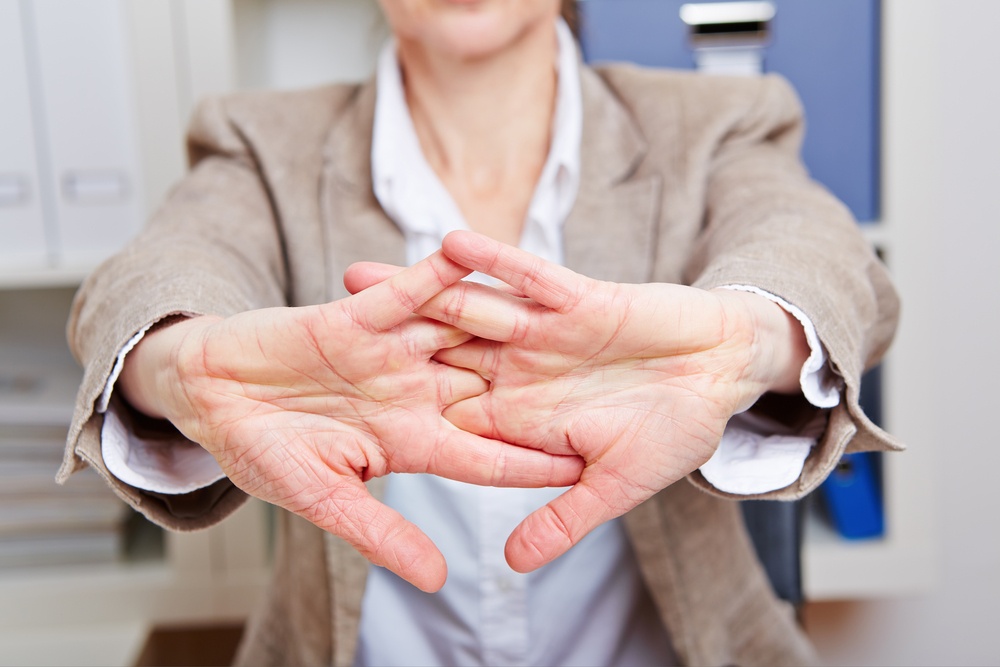Stand Up, Sit Down, Fight.

We sit to eat, we sit to drive the car, we sit at our desks to work, we sit to watch tv, we sit watch movies, we sit to watch sports, we sit to play video games, we sit to use computers, tablets and cell phones. No wonder there is growing concern regarding hazards and health risks of a sedentary lifestyle. Be it at work, rest or play, the reality is that society as a whole is spending more time sitting down then up on their feet.
This is seen in the rise of obesity rates in Canada, the US and other industrialized countries, as well as an increase in health related issues such as heart disease, diabetes and hypertension among that same group. Sitting has been likened to the new smoking or the new cancer, in terms of health risks. The solution, some experts say, is to adapt a stand up approach to many of our daily activities, including the workplace. Yet standing on your feet all day comes with its own set of inherent health risks, like cardiovascular insufficiency, back strains, foot problems and fatigue.
For those who work in the healthcare sector, the service industry, construction and other occupations that require a lot of standing and/or walking, finding different ways to perform the same tasks and/or take regular breaks has been acknowledged and addressed for years. The use of anti-embolism stockings, orthopaedic footwear, cushioned flooring and back braces are some of the equipment developed to address the health issues of standing or being on your feet for long periods. In general, society accepts and is supportive of the issues faced by people who work upright for most of their workday.
Unfortunately, there is not the same kind of awareness and recognition of the health risks associated with occupations that require someone to be seated for the bulk of their working hours. This is the workforce sector that is being impacted negatively by their work circumstance and posture. A recent study has shown that the excessive sitting can increase the risk for cancer, heart disease and even premature death by 20% and the risk of developing diabetes is increased by nearly 90%.
The most effective way of reversing these risks is simple and easy: move more and sit less. Even people who exercise regularly are at susceptible to the adverse effects of prolonged sitting. Ultimately, it takes a complete shift in perspective on how we spend our time at work, not only by workers but through employers, supervisors and managers providing policy and procedure changes that support a change in workstyle. Beyond working hours, the total spectrum of movement in a 24 hour period is what is most important. Here are six tips you can apply to your office environment to keep it healthy and active:
- Stand More. Consider investing in a stand up desk or an adjustable desk that can easily be changed from sitting to standing during the day. A quick way to incorporate standing into your work day.
- Monitor Movement. Moving starts with awareness; tracking your steps is an easy way of discovering how much you are currently walking or moving and also how little it takes to increase your activity.
- Create Movement Triggers. It is easy to get caught up in work and avoid leaving or moving from your workstation. Putting sticky notes on your computer monitor or phone can help remind you to get up. Small changes like standing up when you answer the phone or doing a lap around the office on the way to the washroom.
- Train your Butt. Sitting can lead to poor posture, hunching over and neck strain. By exercising the posterior chain of muscles, you strengthen your core which results in improved posture.
- Plan Purposeful Exercise Breaks. This a great way to stay in shape and increase productivity. Using breaks and lunch hours to take a brisk walk, do flights of stairs or even visit a gym will increase your energy level and allow you to come back to work refreshed.
- Stretch Regularly. Long periods of sitting can cause your shoulder and hip flexors to become tight and shortened resulting in feeling stiff and achy. Setting a timer at 30 minute intervals to prompt you to stand up and stretch throughout the work day will help release tight muscles and prevent neck cramps.
For more information and details on these tips, you can check here.
At the end of the day, sitting vs standing are two sides of the same coin, often in direct conflict with each other and yet similar in their impact on our health and wellbeing. Whether the issues are related to sitting or standing, there is a significant burden on our healthcare systems and often a financial burden on employers. Time off work to address, treat or recover from issues related to prolonged sitting or standing can result in a loss of productivity, greater employee absenteeism, additional operating costs to hire temporary workers and an increase in sick benefits being paid. The secret is to find the happy medium for every job and then adhere to it.
If you would like additional information on how to address prolonged sitting or standing in your workplace, you can contact us directly during business hours by accessing our chat feature or calling 1-844-377-9545. You an also connect with us by email at [email protected], [email protected], or reach out on Facebook, Twitter, or LinkedIn.



